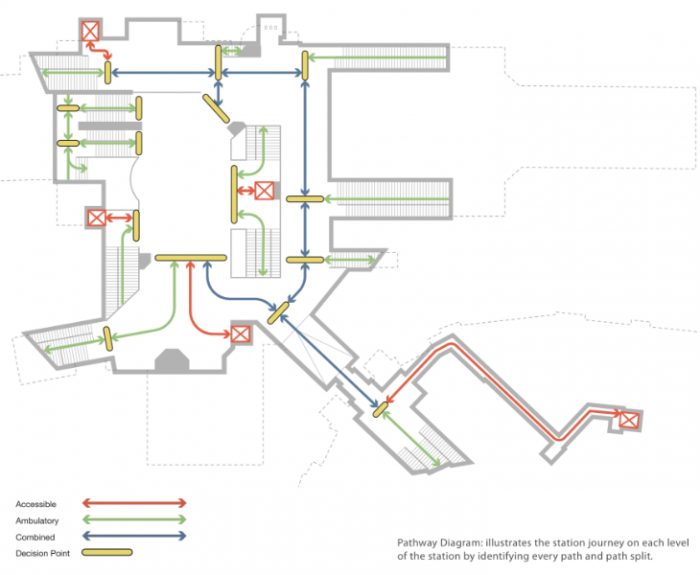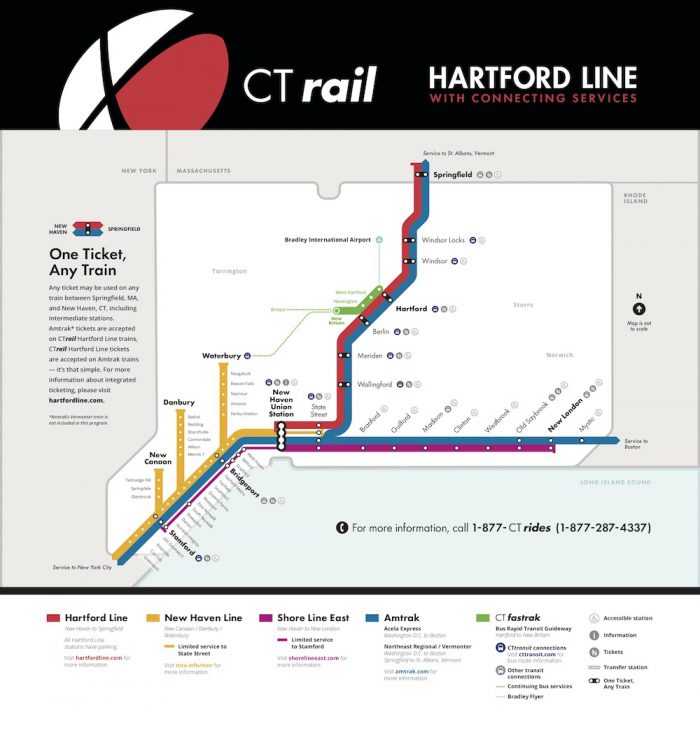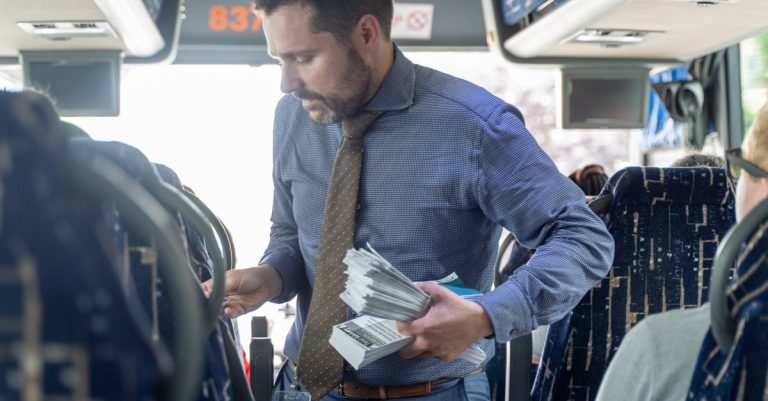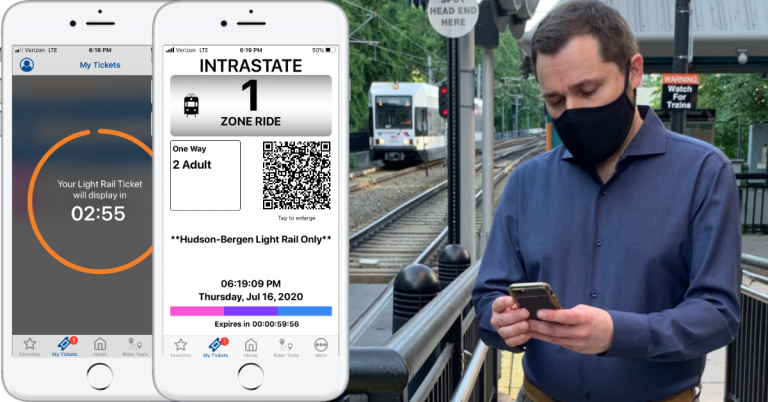Transit Standards: Branding, Design & Graphics
Brand & Graphics Standards
- AC Transit (San Francisco Bay Area) – Corporate Style Guide 📄
- AIGA – Symbol Signs
- Amtrak – Graphic Signage Standards Manual 📄 | Livery & Logo Guide 📄
- ATL (Atlanta) Brand Guide
- Auckland Transport – Transport Design Manual
- BART (Bay Area) – Station Experience Design Guidelines
- British Rail – Corporate Identity Manual 📄 | Reprint
- Bus & Bahn Münsterland – Corporate Design Handbuch 📄
- California Transit Association – Brand Identity
- Chicago Transit Authority – Branding & Trademark Guidelines
- Denton County Transportation Authority – Brand Standards
- Deutsche Bahn – Marketing Portal
- FGC (Catalonia) – Corporate Identity
- LA Metro – Brand Guidelines & Specs
- MBTA (Boston) – Design Standards & Guidelines | Content Style Guide | 1977 Manual of Guidelines & Standards: Part 1 | 2 | 3 📄
- MetroTransit (Minneapolis) – Brand Identity Standards & Style Guide
- MTC (Bay Area) – Clipper Brand Standards 📄 | Wayfinding Standards 📄
- Network Rail – Brand Guidelines
- New York City Transit – Graphics Standards Manual 📄 | Reprint
- Nexus Tyne and Wear – Bus Livery Guidelines 📄
- NFTA-Metro – Branding Guidelines
- ÖBB (Austria) – Corporate Design 📄
- Port Authority of NY & NJ – Wayfinding Manual
- RER (Paris) – Manual Officiel des Standards Graphiqué
- RTA (Chicago) – Passenger Information Design Standards Manual 📄
- SBB (Switzerland) – Corporate Identity & Design
- ScotRail – Branding Guidelines
- Sound Transit (Seattle) – Brand Vision
- STM (Montréal) – Images and Logo Application Standards
- Toronto Transit Commission – Wayfinding Standards Manual 📄
- TransLink (Vancouver) – Graphic Language and Guidelines
- Transport for Ireland – Design Guidelines for the Creation of Public Transport Information 📄
- Transport for London – Design Standards
- Transportation Research Board – Guidelines for Transit Signing and Graphics 📄
- Utah Transit Authority – Graphic Standards 📄
- Valley Regional Transit (Boise) – Brand Guide 📄
- VTA (Santa Clara) – Graphics Standards Manual 📄
- WMATA (Washington DC) – Brand and Style Guidelines 📄 | Manual of Graphic Standards
If we do not define our brand, others will define it for us. We must be certain about what we stand for and claim it at every touch point.
California Transit Association
- 77 Ways to Design the Letter ‘M’ – Eric Jaffe, CityLab, on how mass transit agencies around the world make the letter M distinctive, memorable, and recognizable in logos used throughout their cities.
- A Sign Systems Manual – Alan Fletcher Archive, on Crosby/Fletcher/Forbes design system for the ocean liner QE2.
- AirTrain – Brand identity and environmental graphics designed by Pentagram for the rail link connecting terminals and regional transit at New York City’s JFK and Newark Liberty International airports.
- Annals of Small Town Life: The Logo Stops Here – Jessica Helfand tells the story of Lucille McGinnis, who created the conditions for the iconic NH logo designed by Herbert Matter for the New Haven Railroad.
- Branding New Jersey’s Transit Lines – Stewart Mader shares how he expanded rail line branding to include light rail, bus, and paratransit services, and updated it for digital uses.
- Branding the Metro – Katie Conway, Siegel + Gale, on using brand architecture, visual identity, and brand experience to create a unified transit experience in Los Angeles.
- Design for Rail – Design Museum, exhibition and catalog on the design system for Britain’s Railfreight.
- Design for Rail: The Story of the Railfreight Identity – Tim Dunn, Creative Review
- Exo – Unified brand for Montréal’s regional transit agency is distinctive, works well in English and French, and references the ‘outer’ territory served by regional rail and metropolitan buses.
- Fonts in Use: Transportation – Excellent directory of fonts used in various transportation applications, from a longstanding and well-regarded archive of typography.
- How Boston Got Its ‘T’ – Designers Peter Chermayeff and Tom Geismar share the backstory of their work to create, “a visual identity from the transit authority’s most optimistic (and well-funded) days that helps riders navigate the region with relative ease.”
- How New York’s Subway Signs Came to Be – Michael Silverberg, New Yorker
- I ♥ New York, Stockholm and Chattanooga: how to brand a city – Elli Stuhler and Patrick Eley, DesignWeek, write about an exhibition at the London Festival of Architecture exploring the branding of cities. Important and transit-adjacent, since city branding and transit branding can be used in similar contexts.
- Pick, Johnston & Kono: History of the London Underground Typeface – The story of the London Underground typeface is important to urban history because it set the standard for identity and communication in railway systems around the world. It starts with Frank Pick, publicity manager for the London Underground.
- Prince George’s “TheBus” needs better branding and communication – DW Rowlands & Tracy Hadden Loh, Greater Greater Washington, critique issues with a Maryland country’s transit system’s branding, communication, and website that contribute to poor knowledge of the system, and low ridership.
- Return of the Standards Manuals or Revenge of the Rigid – Sean Adams, Design Observer, on the resurgence of interest in graphic standards manuals in the digital age.
- Ride! Philadelphia Portals Project – Identity system for rapid and commuter rail transit developed by Joel Katz Design Associates for Center City District, PATCO, and SEPTA in Philadelphia, Pennsylvania.
- Spearheading Design: Corporate Identities for European railway companies – Arjan den Boer, Retours, writes about the iconic european railway brands that emerged from the mid-20th century desire to give railways a modern look that coincided with the emergence of large professional design agencies.
- Symbols of Intent: Why Brand Standards are Important – Rachel Ulnar, TypeEd
- The Good, Bad, and Ugly Public Transit Seat Covers of the World – Feargus O’Sullivan reviews the role of textiles in transit.
- The (Mostly) True Story of Helvetica and the New York City Subway – Paul Shaw, AIGA
- The New Look: Looking back at Roundel’s 1980s identity design for British Rail’s Railfreight – Billie Muraben, It’s Nice That
- Toronto Transit Commission Signage Evaluation – Joe Clark & Stephen van Egmund, Two Planet Consulting, assessed the real-world performance of signage when using TTC subway stations.
- Transit Branding’s Virtuous Cycle – Josh Stevens, InTransition Magazine, writes that effective branding and messaging can help get the public to take notice of other improvements being made by transit agencies.
- Typography on the Subway: A Trip Around the World – Ricardo Magalhães, Prototypr, on the typography choices used by subway and metro systems around the world.
- Vignelli Canon – Design guidelines used by Vignelli Associates, studio of Lella and Massimo Vignelli, designers of significant transportation-related work including the New York City Transit Authority Standards Manual, Paris RER structural and graphic signage system, Washington D.C. transit signage system, and AIGA/US DOT symbol signs for use in transportation-related facilities.
- Virgin Trains East Coast rebrands as London North Eastern Railway – Sarah Dawood, DesignWeek, writes about the renationalization, and rebranding of the train line connecting London with Edinburgh and Inverness, Scotland. The new name—London North Eastern Railway—is also the century-old, original name.
Digital Strategy
- BART Media Resources – BART, the regional transit system in the San Francisco Bay Area, maintains a set of media resources for covering public transit that are especially useful because of the section covering the way suicides are reported in the media. BART addresses the issue with great sensitivity, noting, “The way suicides and train strikes are reported in the media can either cause suicides or prevent suicide.”, and offers a set of recommendations for responsible reporting.
- Digital Currencies And Credit Cards Have Subways To Thank For Their Existence – Laurie Winkless, Forbes contributor, tells the story of transit’s influence in developing new payment systems whose impact is felt far beyond urban travel.
- 9 Basic Principles of Responsive Web Design – Sandijs Ruluks, Froont, explains the fundamental principles of building a website that gracefully scales to any screen size. Not transit-specific, but an essential resource for anyone building a transit website.
- Digital Transformation at SBB – Swiss Federal Railways digital transformation strategy and accomplishments in three areas: improving interaction with customers, increasing internal efficiency, and capacity management.

- Easing the Journey for COAST Riders, One Stop At A Time – Altos, a digital agency in Bedford, New Hampshire, profiles its work with the southeastern New Hampshire transit agency Cooperative Alliance for Seacoast Transportation, or COAST, “to make the online journey as easy as hopping on board.”
- Effective Use of Transit Websites – Transportation Research Board
- Frequency and Real-Time Info Help Transit Riders Most – Matt Caywood writes for Greater Greater Washington that real-time and frequency info via apps and station digital signage are two things agencies can do to can help riders at a much lower cost than building new transit service.
- How BART used social media to turn crisis into opportunity (and how WMATA didn’t) – Andy Furillo, MobilityLab, on the successful crisis communications approach taken by Bay Area Rapid Transit (BART) to educate riders during a service disruption on the system’s inadequate funding, and rally support for new funding from the California legislature.
- In Crisis, Public Officials Embrace Social Media – Brian Stelter & Jennifer Preston, New York Times, write about how Hurricane Sandy prompted public officials to use social media to engage with the public, find out where assistance was needed, and share updates on recovery and restoration.
- In the Planning Process, Social Media Talk is Often Cheap – William Herbig, Greater Greater Washington, makes the case that public agencies will get feedback more fully representative of community needs when they formally accept public input via social media.
- Jimi Rowe on Design at TfL and Digital’s ‘Complacency Problem’ – Patrick Burgoyne, Creative Review, interviews the experience lead at Transport for London
- Mastering Digital Project Momentum – Perry Hewitt writes for A List Apart on where large-scale digital projects can stumble, and how to keep them on track. Not transit-specific, but timelessly useful.
- London’s Underground Gets a New Typeface Because 2016 – Margaret Rhodes, Wired
- RidePATH – Official PATH Train App Gives Customers Real-Time Train Info, Maps, & Alerts
- Roles & Responsibilities – Room 34 Creative Services provides a helpful guide to the typical roles and responsibilities on a professional digital team. Not transit-specific, but helpful for ensuring you have the right team in place to build your transit digital experience.
- Six Principles for Developing Transit Web Sites – Bruce Schaller, Schaller Consulting
- Subway Weekender – A Guide to Weekend Service Changes in the NYC Subway. Unofficial, but essential for its simple format that shows, at-a-glance, how lines are affected by essential weekend construction.
- Tardy Transit? Tweet About It – Tod Newcombe, Governing, looks at how transit agencies are using social media to engage with customers, gather feedback, and make changes and improvements based on customer input.
- The Web is a Customer Service Medium – Paul Ford, PostLight, makes the case that the Web is best used as a customer service medium, instead of a publishing medium. Not transit-specific, but essential for understanding how the Web can be used to enhance transit customer experience.
- Thirty-four Good Practices for Transit Web Site Design – Bruce Schaller, Schaller Consulting
- Urban Mobility in a Digital Age – LA DOT developed a transportation technology strategy, data standard, and Mobility Data Specification for Mobility as a Service Providers who work within the City of Los Angeles.
- Welcome to the new transitchicago.com – Chicago Transit Authority built a page to accompany the release of its completely refreshed website. The page explains the overhaul, with sections titled, “What’s New?, What’s Not?, and What’s Next?”, a selection of “Pages we think you should check out”, fun facts and stats on the website, and a visual history showing the evolution of the website from 1996 to the present.
- Welcome to this new website – Montréal STM built a page to introduce customers to its new website, with video explainers for new real-time bus location and schedule info, FAQ, and a place to share feedback.
Map Design
- A New Way to Look at Transit – SEPTA redesigns its bus maps.
- Are Our Transit Maps Tricking Us? – Jessica Gross, CityLab, explores the impact of transit map design on the ways people move throughout cities.
- Design Longevity: New York City Subway Map – In a 2007 interview, Gothamist asked Michael Hertz, designer of the New York City Subway Map, “What is the one thing that you are most proud of about your 30-year-old design?”
- European Bus Maps : the State of the Art – Jug Cerovic, on techniques used in European bus maps to represent service types, lines, and frequency.
- Flying Colours – Austria’s ÖBB national railway and Wiener Linien collaborate to incorporate ÖBB’s S-Bahn lines in specially marked in green and vintage pink on all transit maps, including the rapid connection map, the “overhead map” on underground doors and the Vienna metropolitan area public transit map.
- Hartford Line – Map depicting service on a new rail line connecting New Haven, CT, Hartford, CT, and Springfield, MA shows how Connecticut is developing a transit ‘spine’ through the center of the state. Bus rapid transit is included as well, and the “one ticket, any train” policy and messaging is an excellent way to ensure a smooth customer experience.
- Map Assessment for AC Transit – Jarrett Walker + Associates prepared a comprehensive map assessment for AC Transit that addresses the role of the map in public information, types of distinctions to be made among services, detail/accuracy vs. clarity/ease-of-use, design choices, and testing sample maps with customers.
- Meet Harry Beck, the genius behind London’s iconic subway map – Amar Toor, The Verge, looks at how Harry Beck created the London Underground map, now considered one of the most iconic and influential transit maps.
- Mind the Map! The Impact of Transit Maps on Path Choice in Public Transit – Zhan Guo, Rudin Center for Transportation Policy & Management, investigates the role transit maps play in passengers’ travel decisions.
- Moscow Metro map 3.0 | 2.0 | 1.0 – Detailed case studies from Art Lebedev Studio on the studio’s process for designing the official Moscow Metro map, individual line maps for cars, and station map with information about local sights and parks.
- New York & New Jersey Subway Map – New York Subway Map with New Jersey transit systems, including Hudson-Bergen Light Rail, NY Waterway ferry, & PATH. Built by Stewart Mader to improve transit wayfinding in the largest US metro region.
- Remembering the Designer Who Changed the Way We Think About Transit Maps – Mark Byrnes, CityLab, remembers Massimo Vignelli’s impact on American graphic design.
- Rome’s Metro Map displays the platform configuration of stations, so riders know on which side of the train the doors will open.
- The Lost NYC Subway Map That May Vastly Improve Modern Ones – Margaret Rhodes, Wired
- The New Paris Metro Map – Constantine Konovalov & Irina Neustroeva, Teeter-totter-tam
- The New York Penn Station Atlas – John Schettino, J/S/D, proposes a set of maps and wayfinding tools to, “help anyone easily find the best way to their destination in Penn Station.”
- Transit Maps – Cameron Booth, a graphic designer, reviews transit maps from around the world, “be they real or imaginary, from the past, present or future, and stating what I like and don’t like about them, giving each map my own, totally subjective rating.”
- Transit Maps: Apple vs. Google vs. Us & A Technical Follow-Up: How We Built the World’s Prettiest Auto-Generated Transit Maps – Anton Dubrau, Transit App, explains why-and how-the app maker built its own custom transit maps.
- What If Bike Paths Looked Like Subway Maps? – Andrew Small at CityLab profiles Michael Graham, who makes maps of urban bike networks in the same style as transit maps. Also check out the London Cycle Map by Route Plan Roll.
- Why Paper Maps Still Matter in the Digital Age – Meredith Broussard makes the case that, “Instead of arguing whether paper or digital is a better map interface, people should consider what map is the right tool for the task.”
Customer Experience & Wayfinding
- How to Dramatically Improve Public Transit Without Building More of It – Emily Badger, Washington Post, writes about how transit agencies can improve customer experience with “coherent region-wide transit map for commuters, an integrated fare structure and a single, modern fare card.”
- How to Design a City for Women – Claire Foran, CityLab, on Vienna’s work to apply its gender mainstreaming strategy to pedestrian mobility and public transit.

- Improving the Customer Experience – White Paper, Transit Leadership Summit, on the ways addressing customer experience can make transit more attractive to riders.
- Inscribed in the Living Tile: Type in the Toronto Subway – Joe Clark, Association Typographique Internationale 2007 Conference, on the evolution of typography in the Toronto Subway.
- LA Metro’s Maintenance Diaries – On its blog, The Source, LA Metro runs a series called Maintenance Diaries, to profile work done to keep the system in a state of good repair. Topics include: How Metro trains are powered, How bus service is restored after a breakdown, What makes a train run smoothly, and The New Blue Line.
- Mod Desire – Onastasia Yousef, Pittsburgh City Paper, on Pittsburgh’s trolley disguised as public art, designed by Diana Riddle of Pittsburgh-based Peter Muller-Munk Associates (MMA). MMA also designed the NJ Transit graphic standards system and manual in 1981.
- Munich Transport Corporation: FAQ – MVG, the Munich Transport Corporation, answers questions that help customers understand topics like priority signaling to keep buses moving in traffic, the increased passenger capacity of open-gangway subway trains, and the ongoing maintenance necessary to keep the city’s transit fleet running.
- National advertising effort needed by local transit agencies – Ethan Goffman, MobilityLab, suggests that transit agencies might benefit from pooling some resources to mount a national advertising campaign focused on the benefits of swapping the car for the train, or bus.
- New Standards for New York’s Underground – Steven Heller, PRINT Magazine, reviews the MTA’s new system for communicating with customers about planned work.
- Play Everywhere Playbook: Transit – Kaboom, on incorporating opportunities for play into public transit, to enliven transit trips with children.
- Seamless Transit – SPUR proposes five strategies for integrating public transit throughout the San Francisco Bay Area.
- Selling a Vision: What Transit Agencies Should Learn from Car Companies – Alana Miller, Frontier Group
- Smart Branding Attracts the Masses to Mass Transit – Josh Stevens, InTransition Magazine, highlights messaging and campaigns that get people to change their minds about taking transit.
- The Amazing Psychology of Japanese Train Stations – Allen Richarz, CityLab, writes that the nation’s famed mastery of rail travel has been aided by some subtle behavioral tricks, including calming mood lighting on platforms, pleasing musical pieces composed specifically to replace the jarring buzzer used to signal departing trains, and use of shisa kanko, or point-and-call, by conductors to increase workplace safety.
- The psychological tricks TfL uses to make London’s tube feel faster – Nicole Kobie, Wired, looks at all the experiments and trials underway throughout London’s Underground network to improve passenger flow and customer experience.
- The Psychology of Getting People to Take Public Transit – Christine McLaren, Metropolis, says, “It’s not enough for public transportation to be efficient. It needs to be enjoyable, fun, better than the alternative. Public transportation needs to be sexy.”
- The Undervalued Simplicity of Bob Noorda’s Vision for Milan’s Metro – Mark Byrnes, CityLab, on Dutch-born designer Robert Noorda’s wayfinding system for the Milan Metro, which he designed before collaborating with Massimo Vignelli on the new York City Transit Authority Graphic Standards Manual.
- To Attract Riders, Call Transit ‘Congestion Free’ – Jarrett Walker, CityLab
- Travel Support Card – Transport for London offers a Travel Support Card for anyone who finds traveling difficult. The card provides space for a customer’s name, emergency contact info, and anything that can help staff provide support during a journey.
- TransLink: Multi-modal wayfinding for Metro Vancouver – Applied Wayfinding
- Wayfinding With Lance Wyman – Mark Byrnes, CityLab, on graphic designer Lance Wyman’s impact on wayfinding, from his iconic symbol systems for the 1968 Mexico City Olympics and Mexico City Metro, to the unused symbol system he created for the Washington, DC Metro.







